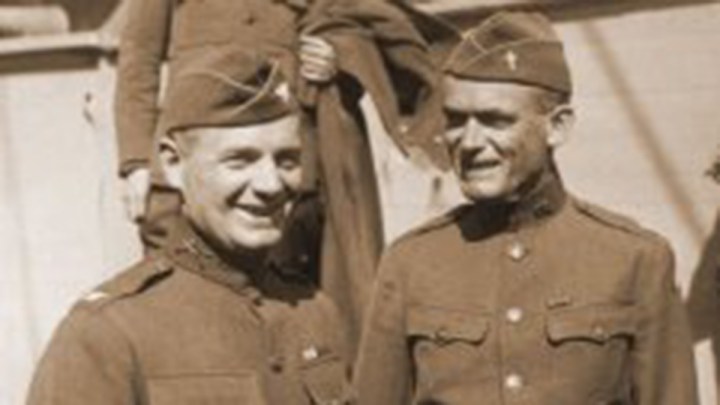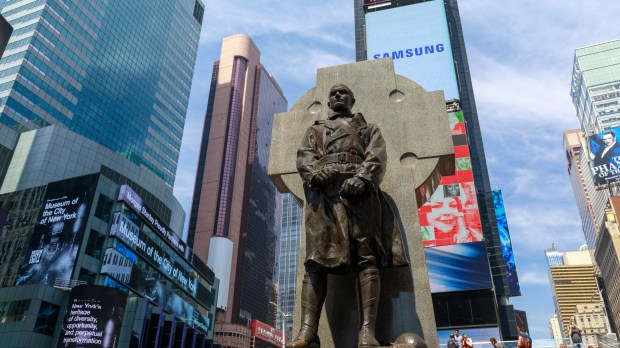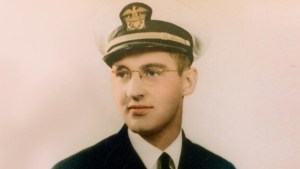At the northern end of New York City’s Times Square, standing right in front of the “Red Steps” that also serve as the roof of the TKTS discount theater ticket booth, is a statue of a Catholic priest.
The eight-foot high statue depicts Fr. Francis P. Duffy (1871-1932), the most highly decorated cleric in the history of the United States Army, standing on a pedestal, with a massive Celtic cross at his back. In fact, this triangular section of Times Square is more properly known as Father Duffy Square.
The Canadian-born priest served as a military chaplain during the Spanish American War, and later as pastor of Our Savior parish in the Bronx when he was called up to serve as chaplain of the 69th Infantry Regiment of the New York National Guard in 1914.
The “Fighting 69th,” which was made up of mostly Irish Americans, was called to duty in 1917 during World War I. Sent to the front in France, over the course of 180 days in combat, 900 of its men were killed. Their story was immortalized in the 1940 movie The Fighting 69th, starring James Cagney and Pat O’Brien as the chaplain.
Fr. Duffy is remembered for his bravery on the battlefield, administering last rites, tending to the wounded, and caring for the dead. Going far beyond the duties of a chaplain, Fr. Duffy served as a leader to his men, boosting their morale as they prepared to enter battle, and comforting the wounded. General Douglas MacArthur later said that Fr. Duffy was briefly considered for the post of regimental commander.

In his book Father Duffy’s Story, Fr. Duffy later recounted the story of the Fighting 69th. He described celebrating Easter Mass outside a church in a French village.
“I have a congregation of the old faith, approximately three thousand souls. They are generally scattered through five or six French Villages, when en repos, and more scattered still throughout the trenches and abandoned towns when in line,” he said, according to the website for the Archives of the Archdiocese of New York.
Before a battle, Fr. Duffy would walk through the trenches granting absolution to the soldiers. At the end of the fighting, he described the “heartbreaking task” of burying the dead.
“I knew these men so well and loved them as if they were my younger brothers. It has been the saddest day of my life. Well, it is the last act of love I can do form and for the folks at home,” he wrote.
For his service, he was awarded the Distinguished Service Cross, the Distinguished Service Medal, the Conspicuous Service Cross (NY), the Légion d’Honneur (France) and the Croix de Guerre (France).
After the war, Fr. Duffy served as pastor of Holy Cross Church, located a block away from Times Square where his statue stands today. There he established a 2:15 a.m. Mass for Sundays and Holy Days to accommodate the late schedules of the theater district community.
Fr. Duffy died on June 26, 1932. A solemn military mass was celebrated at St. Patrick’s Cathedral, with thousands in attendance. A procession of soldiers, veterans and policemen and firemen formed a funeral cortege from Holy Cross Church to St. Patrick’s.


